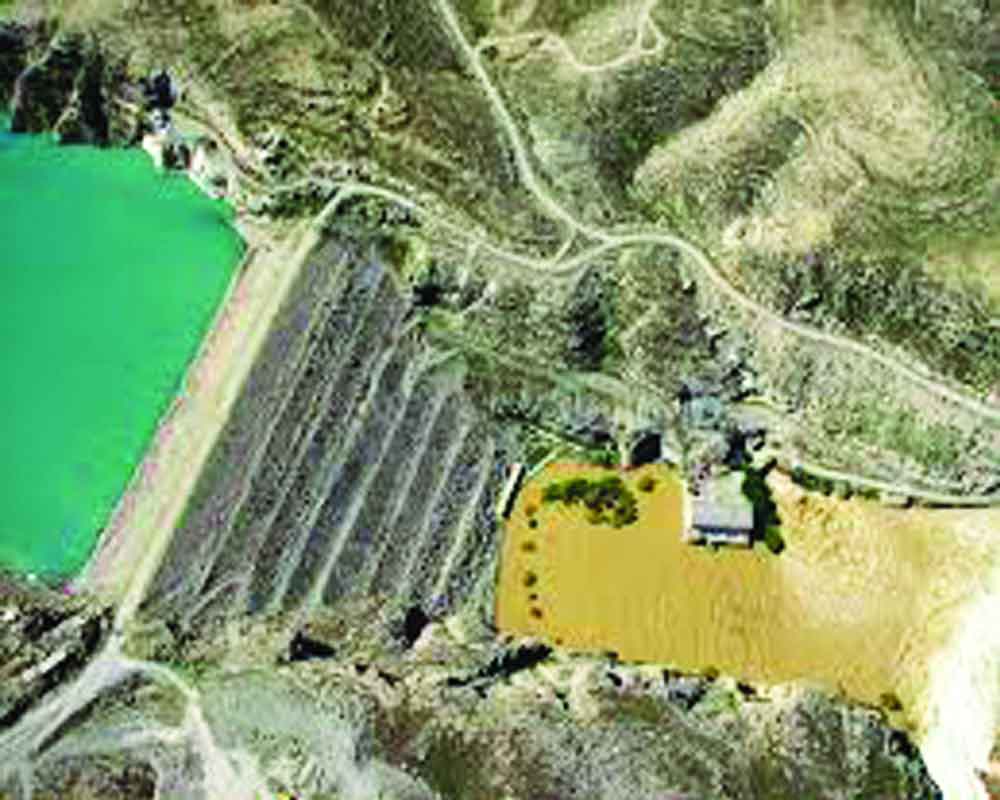The effects of climate change have aided environmentalism as an idea to enter international political and economic discourses. But perhaps the most alarming aspect is how it might actually be causing civil unrest and violence within countries
On September 20 this year, environmental activists and sympathisers in over a hundred countries participated in an international “climate strike.” Protesters — including in Pakistan — demanded urgent action to stem the tide of climate change, which according to environmentalists, is being caused by human negligence and by various economic and developmental policies being implemented by Governments and business enterprises across the globe.
There is now sufficient scientific data to prove that indeed, the average temperatures of the planet have been rising, causing drastic climatic changes, namely global warming and its cascading effects. This has aided environmentalism as an idea to enter international political and economic discourses.
As a concept (and a global movement) environmentalism puts the blame of global warming on the reckless exploitation of the Earth’s natural resources by Governments and business ventures. This claim often draws a sharp reaction from those who believe that climate change is a natural occurrence.
However, due to the noticeable impact of the current bout of climate change, more people are now responding to the concerns raised by environmentalists than ever before.
To me, perhaps the most alarming aspect of climate change is the one that many environmentalists have not yet delved deeper into, that is how it might actually be causing civil strife within countries. The June 2019 edition of the academic journal, Nature, published a study that demonstrated how droughts, floods, natural disasters and other climatic shifts have influenced approximately 20 per cent of armed conflicts over the last century.
The study concluded that in the coming years, one in four armed conflicts around the world will be caused by global warming. It gave the examples of civil wars in Syria and in various African countries, thus reinforcing the findings of a March 2015 study conducted by America’s National Academy of Sciences. Both the studies noted that increasing temperatures trigger unpredictable climatic shifts, which result in failed crops. This forces farmers to migrate to urban centres. Cities that have already been experiencing rising populations and a resource crunch do not react kindly to such migrations. This causes political/religious/ethnic/tribal tensions, whereas catastrophes such as droughts and flooding in the rural areas are exploited by warlords to assume power. Such a situation can explode and has exploded into full blown civil wars. But there is still more to this phenomenon than just rural-to-urban migration. And the impacts in this context are not always immediate. Take for example, the case of the Kajaki Dam in the Helmand province of Afghanistan. Its construction and the devastation that it caused is discussed in some detail in BBC’s 2015 documentary, Bitter Lake, made by the brilliant British documentary filmmaker Adam Curtis; and in the 2010 book, Environmental Histories of the Cold War.
In the 1950s, King Zahir Shah of Afghanistan initiated a developmental programme in his country to modernise its agriculture and economy. This also included the construction of dams. On the advice of American experts, one such dam was to be built in the country’s Helmand province.
American engineers and geologists arrived and began to construct the dam — the Kajaki Dam. Construction work displaced hundreds of peasants and herdsmen. In 1953, as the dam neared completion, some observers warned that it may cause waterlogging and salinity in the surrounding areas, sullying the fertile soil of the area. But the warnings were not heeded and the problem not addressed. According to Curtis, the then Prime Minister, Daoud Khan, encouraged the expansion of the dam because being a staunch Pashtun nationalist, he wanted more Pashtun families to settle in Helmand that borders a Pashtun majority area of Pakistan’s Balochistan province.
By the time Daoud toppled King Zahir in 1973, the salinisation problem caused by the dam had compounded. Despite the availability of irrigated water, the soil became problematic to harvest cash crops such as cotton.
Instead, it became perfect to grow another cash crop poppy. The economy of the area thus began to revolve around poppy, which is used to prepare the highly-addictive narcotic heroin. For this very purpose, Helmand became extremely important to warlords fighting Soviet forces in the 1980s and then against the fanatical Taliban regime.
Curtis describes Helmand as one of Afghanistan’s most violent and corrupt regions, mainly due to the poppy that is grown there in abundance.
Ironically, despite the fact that the Taliban regime attempted to eradicate poppy farms in the country, after the regime was removed in 2002, Taliban insurgents regularly interact with Helmand’s poppy growers and corrupt Afghan officials to sustain the area’s poppy farms (irrigated by the dam). The poppy crop sustains the growers, enriches the officials and helps finance the Taliban’s insurgency against US forces.
The dam thus became a man-made environmental disaster that instead of enhancing a country’s agricultural fortunes, became the harbinger of corruption, violence and war.
(Courtesy: The Dawn)


























